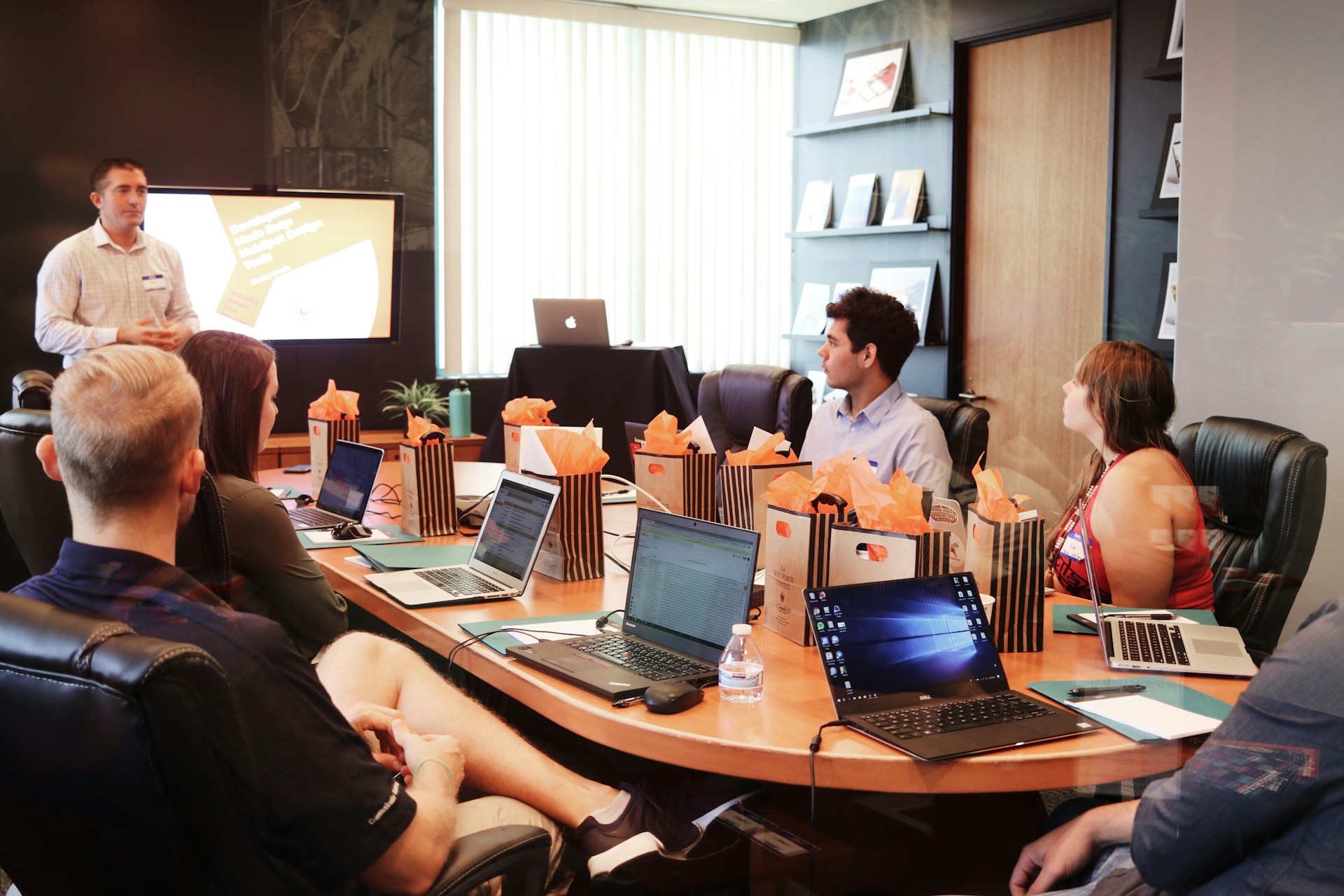Unleashing creativity for development through design thinking
In today’s workplace, traditional training techniques frequently fall short in captivating learners and driving real change. Enter design thinking, a human-centered approach to innovation that is reshaping the way we approach training and development. It’s pretty “meta” but we use design thinking to design our design thinking training and innovation workshops for and with our clients. Discover how design thinking can be used in training and development and find resources below.
What is Design Thinking?
At its core, design thinking is about empathizing with users, defining their needs, ideating innovative solutions, prototyping ideas, and testing them iteratively. Originally popularized by design consultancy IDEO and Stanford University’s d.school, design thinking has since been adopted by organizations in many different industries. From tech giants to healthcare providers, design thinking can be a powerful tool for problem-solving and innovation.
Applying Design Thinking to Training and Development
So, how can design thinking be applied to training and development? Here are some key principles and strategies to consider:
- Empathize with Learners: Start by understanding the needs, motivations, and challenges of your learners. Conduct interviews, surveys, or observational studies to gain insights into their experiences and preferences.
- Define the Problem: Once you’ve gathered insights, define the problem you’re trying to solve. What are the gaps in knowledge or skills that need to be addressed? Clarifying the problem will guide your design process.
- Ideate Creative Solutions: Encourage brainstorming sessions where participants can generate a wide range of ideas without judgment. Think outside the box and explore unconventional approaches to training.
- Prototype and Test: Develop rough prototypes of your training solutions and gather feedback from learners. Use this feedback to refine your ideas and iterate on your designs.
- Iterate Continuously: Design thinking is an iterative process, so be prepared to make adjustments based on feedback and new insights. Embrace failure as an opportunity to learn and improve your training process and methods.
Resources for Design Thinking in Training
There are numerous resources available to help you incorporate design thinking into your training and development initiatives. Books, online courses, workshops, and templates can be used to guide you through the design thinking process and learn how that process can be applied to training and development.
- Design Thinking Books: Start by exploring books like “Design Thinking for Training and Development” by Sharon Boller and Laura Fletcher, which provides practical guidance and case studies for applying design thinking principles in learning environments.
- Online Courses: Platforms like Innovation.Teachable and IDEO U offer courses on design thinking and innovation that can help you deepen your understanding and skills.
- Workshops and Events: Look for workshops, conferences, and networking events focused on design thinking and training. These can provide valuable opportunities to learn from experts and exchange ideas with peers. Innovation Training can create a custom workshop or training event to teach you about design thinking and how it can be applied to training, development, and other processes in your organization.
- Tools and Templates: Explore tools and templates specifically designed for applying design thinking to training and development, such as journey maps, empathy maps, and design challenges.
Final Thoughts – Design Thinking in Training
Design thinking offers a powerful framework for reimagining training and development. By adopting a human-centered approach and embracing creativity and experimentation, organizations can create more engaging, effective, and impactful learning experiences for their employees. So why wait? Start applying design thinking to your training initiatives today and unleash the full potential of your workforce. Contact us if you have questions or would like help creating a design thinking training workshop.
